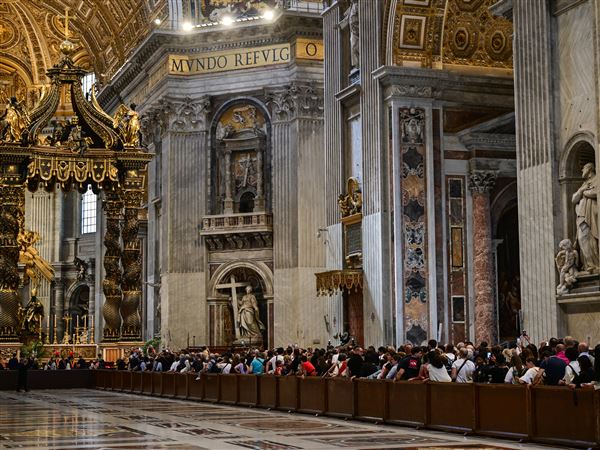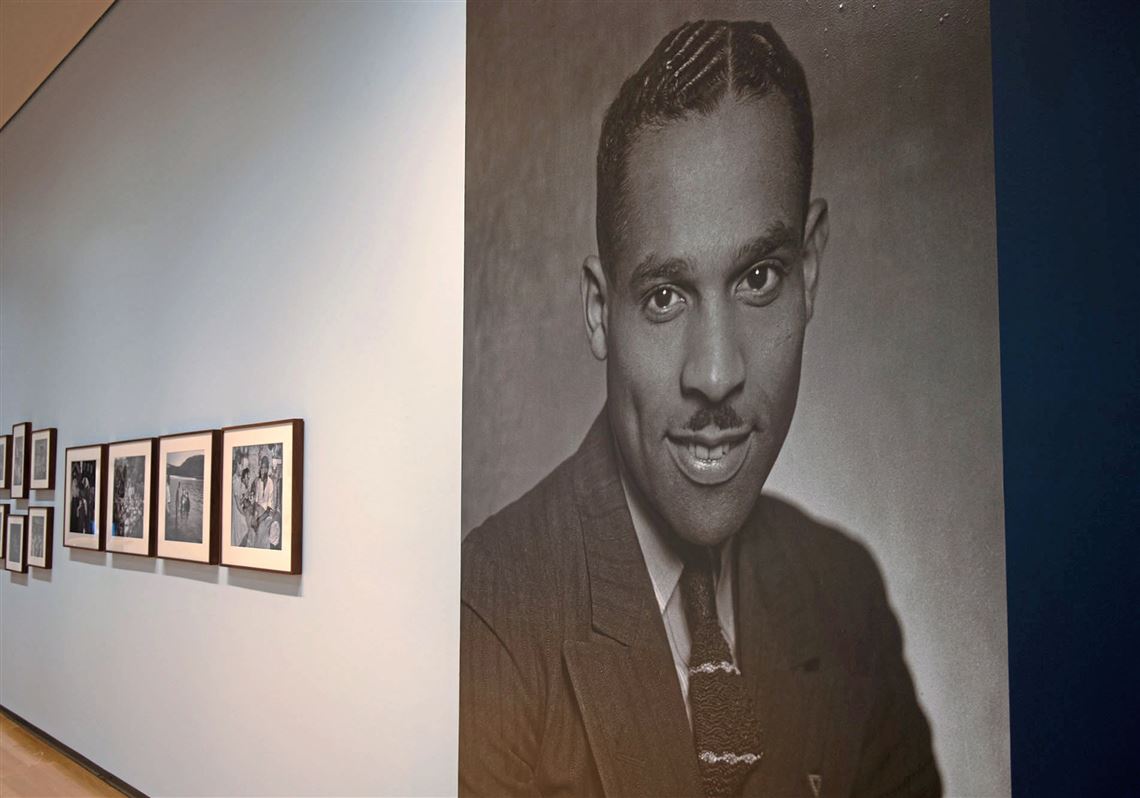The opening of the new gallery “In Sharp Focus: Charles ‘Teenie’ Harris” at Carnegie Museum of Art this weekend is important for two reasons. It establishes a dedicated presence for the late Pittsburgh photographer within the museum’s permanent collection and it represents a significant step in the museum’s commitment to Mr. Harris’ life work.
Over 40 years, from the 1930s to the 1970s, Mr. Harris (1908-1998) was a photographer for The Pittsburgh Courier, which was established in 1907 and once the country’s most widely circulated black newspaper.
He covered news events ranging from local appearances by presidential candidate John F. Kennedy and entertainer Lena Horne to Pittsburghers engaged in everyday activities in the Hill District, which gives the archive particular value.
“He photographed the middle ground of black society which was not as well depicted or explained,” said archive specialist Charlene Foggie-Barnett.
The collection is invaluable to historians and others conducting research, but it has also been popular with the general public, who have provided names and other details on the mostly unidentified images.
Working with the archive is a personal passion for Ms. Foggie-Barnett, whom Mr. Harris photographed as a child along with other family members.
“For me it’s a joy and a dream come true,” she said. “It’s what I want to offer for other people like myself.”
She especially enjoys community response to the images when they’re displayed.
“It’s very powerful to be able to say ‘I was there’ or ‘Oh my God, my mother is there. What was she doing there?’”
The inaugural exhibition comprises 36 photographs organized in three sections: access and opportunity, intersectional identity and societal networks. The first section speaks to “what you’ve been able to do with what you have,” Ms. Foggie-Barnett said.
The Hill District supported many successful businesses, she noted, pointing to a photo of Kay’s Valet Shoppe. It was owned by a woman, which was rare, especially after World War II.
Mr. Harris also portrayed people coping under distressing circumstances. A family is pictured in what is described on the wall label as “their dilapidated home” in the Strip District. On the wall is the maxim “Be kind to everyone.”
The second section speaks to the way identity is formed. An intersectional experience is one that is greater than the sum of its parts. In one photo, a little girl in a doll shop holds a doll almost as large as she is in front of a case holding doll parts. She is black and the doll and parts are all white.
“All of the selections are there to build a doll,” Ms. Foggie-Barnett said, “but none of them look like her.”
In a 1945 photo, a small costumed black girl stands on a stage with a white woman at the Central YWCA in Washington, Pa. Between them is a banner reading “The Achievements of the Negro.”
“How do people keep going and make the best of what they have and go on?” Ms. Foggie-Barnett asked.
The societal networks section includes a 1949 photograph of two smiling girls engaged in conversation with Sabre “Mother” Washington, who was born a slave.
Another image is of a nighttime Masonic procession in the 1940s that would have been secret, Ms. Foggie-Barnett said. “They trusted Teenie to give it dignity and respect.”
Mr. Harris photographed black fraternities and sororities that were created because African Americans were not allowed in similar white organizations. Ms. Foggie-Barnett’s father, Charles Foggie, is among those in a photograph of Alpha Phi Alpha members on the porch of their fraternity house.
Couples in formal dress are shown at a FROGS dance in the Gateway Plaza ballroom in 1959. FROGS, an acronym for Friendly Rivalry Often Generates Success, is a men’s club that represents the elite of black society and its membership is limited to 50, Ms. Foggie-Barnett said.
The current exhibition will remain in place for 18 months and then be replaced by selections from the more than 70,000 Harris images in the archive.
Those choices will be determined by the question: “What stories do we want to tell?” Ms. Foggie-Barnett said. Emphasis will be put on images that have relevance today, and those that speak to the range of visitors expected.
The gallery will also host educational programs and community events related to the collection.
The intent of the gallery is to be welcoming. There is an oversized self-portrait of Mr. Harris at the entry near a cabinet that holds his Speed Graphic camera and negatives. Couches invite visitors to sit and talk about the photographs or browse books and other publications featuring the photographer’s life and work.
Visitors will also be able to explore the extensive archival collection using a touch panel or iPads in the main gallery and in an adjacent space.
That space connects with another gallery also debuting this weekend that will show photography and works on paper from the permanent collection. Its inaugural exhibition comprises 25 photographic works that were acquired during the past four years.
“The key thing about this space is to welcome the community,” said Eric Crosby, the museum’s Henry J. Heinz II acting director and Richard Armstrong senior curator of modern & contemporary art.
Museums are asking what defines a responsive art museum in today’s world, Mr. Crosby said. Beyond a place of contemplation they can be places of lively debate.
“This is a living archive documenting black life in Pittsburgh. It’s not the past. It’s the present,’ he said. “It has universal relevance in Pittsburgh and in America.”
One of Mr. Harris’ cameras and several of his images of life in Pittsburgh are in the permanent collection of the Smithsonian’s National Museum of African American History and Culture that opened in 2016 on the National Mall in Washington, D.C.
“We at Carnegie Museum of Art embrace artists as vital forces in our culture. They are voices for change,” Mr. Crosby said.
Ms. Foggie-Barnett has high praise for the support and dedication the museum has provided the archive since its inception in 2001, particularly “how they allow us to let this archive breathe.”
With an expression that combined joy and a bit of remnant disbelief, she nodded toward the museum’s front entrance and said, “Less than five miles up that hill is where a vast majority of these images came from.”
M. Thomas: mthomas@post-gazette.com or 412-263-1925.
First Published: January 24, 2020, 1:00 p.m.















